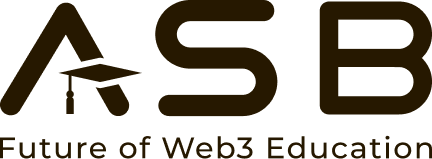Web 2.0 vs.Web 3.0: Navigating the Evolution of the Internet
The evolution of the internet has witnessed remarkable transformations, propelling society from static web pages to interactive platforms that reshape the way we communicate, collaborate, and consume information. The transition from Web 2.0 to Web 3.0 marks a significant turning point in this journey, ushering in a new era of connectivity and innovation. In this article, we delve into the key differences between Web 2.0 and Web 3.0, exploring their distinct characteristics, implications, and the potential they hold for the future.
Web 2.0: The Rise of Interactivity
Web 2.0, often referred to as the “Social Web,” emerged in the early 2000s and revolutionized online interactions. Unlike its predecessor, which primarily featured static content, Web 2.0 introduced dynamic user-generated content, paving the way for social media platforms, blogs, and collaborative online spaces. This shift empowered users to engage actively, creating, sharing, and curating content. Notable examples include Facebook, YouTube, and Wikipedia.
Characteristics of Web 2.0:
- User-generated content and social interaction.
- Collaborative platforms and sharing economy.
- Rich user experiences through multimedia content.
- Focus on social networking and information dissemination.
Statistics:
- In 2021, there were over 2.8 billion monthly active users on Facebook, making it the largest social media platform globally.
- YouTube, a prominent Web 2.0 platform, reported over 2 billion logged-in monthly users as of 2021.
Examples:
- Wikipedia showcases collaborative content creation, allowing users to contribute and edit articles.
- Airbnb demonstrates the sharing economy concept by enabling users to rent accommodations from individuals.
Web 3.0: The Era of Decentralization
Web 3.0, often referred to as the “Semantic Web” or “Decentralized Web”, is the next phase in internet evolution. It aims to create a more intelligent, efficient, and interconnected online ecosystem. At its core, Web 3.0 leverages emerging technologies such as blockchain and artificial intelligence to enhance data privacy, security, and user control. Unlike its predecessor, which relied heavily on centralized platforms, Web 3.0 envisions a decentralized internet, where users have greater ownership of their data and interactions.
Characteristics of Web 3.0:
- Decentralized platforms and blockchain integration.
- Enhanced data privacy and user control.
- Seamless integration of real and virtual worlds (augmented reality).
- AI-driven personalization and automation.
Statistics
- The global blockchain market is projected to reach $39.7 billion by 2025, indicating the growing importance of decentralized technologies.
Examples:
- Cryptocurrencies like Bitcoin and Ethereum illustrate the implementation of blockchain technology in Web 3.0.
- Decentralized applications (DApps) such as Brave Browser reward users with cryptocurrency for engaging with ads and content.
Implications and Opportunities
The transition from Web 2.0 to Web 3.0 has profound implications for various industries, including finance, healthcare, entertainment, and education. With Web 3.0’s emphasis on data security and user control, individuals can expect greater protection of their personal information and reduced reliance on intermediaries. For businesses, this shift opens doors to innovative monetization models, such as tokenization of assets and enhanced customer experiences through AI-powered personalization.
The healthcare sector, for instance, could leverage Web 3.0’s decentralized data management to ensure secure sharing of patient records across borders, while the entertainment industry might offer immersive virtual experiences through augmented reality integration. Furthermore, education could evolve with AI-driven personalized learning paths, catering to individual student’s needs and enhancing the overall learning experience.
Conclusion
As we stand at the crossroads of Web 2.0 and Web 3.0, the internet’s evolution continues to shape our digital landscape. Web 2.0 introduced us to the power of user-generated content and social interaction, laying the groundwork for a more connected world. Web 3.0, with its decentralized infrastructure and cutting-edge technologies, promises to amplify these connections while prioritizing data privacy and user autonomy.
The transformation from Web 2.0 to Web 3.0 isn’t just about technological advancements; it’s about redefining the very nature of our online existence. As we embrace the possibilities of Web 3.0, we embark on a journey where the boundaries between reality and the digital realm blur, ushering in an era of innovation, empowerment, and limitless potential. Whether you’re a user, a business, or a visionary, the evolution from Web 2.0 to Web 3.0 invites us all to participate in shaping the future of the internet.
